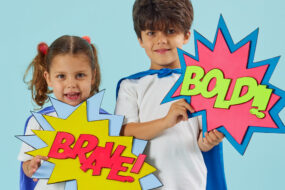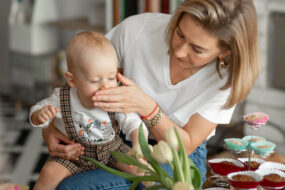7 types of play that are awesome for kids
Child’s play is a vital part of growing up, and essential for learning and developing life skills. But some forms of play are more valuable than others.
Hearing children at play is music to most ears, but research shows games are more than fun.
In fact, a growing body of evidence is finding play is essential for learning and developing life skills – from birth well into the teenage years.
The many benefits of play time
Recent studies show clear links between less play and the increased levels of anxiety and depression in adolescents.
There is also a push for kids of all ages to have more outdoors playtime, with experts saying it has untold benefits for developing minds and wellbeing.
Deakin Institute for Physical Activity and Nutrition Professor Kylie Hesketh says play allows children and young adults alike to experience important life lessons first-hand, but “it doesn’t actually feel like learning when it’s fun”.
“They can also gain social skills, learn emotional regulation and how to take turns,” Prof Hesketh says.
“Meanwhile, play provides a really rich environment for academic learning that – particularly for young children – can be richer than the structured environment that they get in the classroom.”
But some types of play are better than others, so here are some things to consider:
Let them play alone
“There is a tendency for parents and other adults to want to step in and solve problems,” Prof Hesketh says.
“But it is actually through letting children struggle, negotiate and work things out for themselves that they learn life skills.”
Research shows independent play is especially useful to children aged 6-10, helping them improve verbal and non-verbal language skills.
- Life lessons: 5 surprising things help prepare kids for school
Go back to basics
It turns out expensive gifts may not be as beneficial as a stick or cardboard box.
“One of the problems with many toys that have been developed for children is that they are designed for a specific purpose, and what we find is when kids have toys that are less directive they actually develop their imagination and problem-solving skills more,” Prof Hesketh says.

Play to your child’s strengths
Play Psychology Melbourne senior psychologist Vicky Saltis says tweaking play activities to suit a young child’s natural inclinations will help maximise learning potential.
“For a child who enjoys Lego, you can utilise it for learning counting, colours, shapes, letters, patterns, addition, sharing,” Vicky says.
“For a child who enjoys arts and crafts creating letter bead bracelets for spelling practice, or puffy number stickers for practising times tables, can amplify the fun factor of doing homework.”
- Boredom busters: 50 creative ways to keep kids busy
Challenge them
Regardless of age, play should be complex and sometimes difficult.
It is important for younger kids to climb, jump and challenge their physical capabilities.
As they grow into their tweens and teens, this will extend to challenging their minds.
Risky play is also a must – even though it may make parents nervous – as it allows all children, from toddlers to teens, to learn safe boundaries.
Play outside
A recent UK study found kids play outside half the amount of time compared with their parents’ generation, and this is a worry for experts.
“There is a growing body of research around nature play and the idea of learning in natural environments,” Prof Hesketh says.
Nature play can lead to more confidence and imagination for younger kids, while it fosters independence and inspiration in older kids.

Mistakes are normal
Failure is a part of life at any age, but that doesn’t make it any less traumatic.
But when mistakes are made in a game, the blow tends not to land as hard.
Experts agree the more opportunities a child, tween or teen has to face age-appropriate obstacles in play, the better they become at overcoming them in real life, building resilience and self-esteem.
Make it physical
Learning in a stationary environment is not recommended.
“There are a lot of children who can retain information much better if they are learning kinaesthetically, so this means through touch and movement,” Prof Hesketh says.
This is especially true for growing boys, she says, so finding a way to incorporate touch and movement into any learning situation is recommended.
- Cool runnings: Why winter sport is good for kids
By Alex White.






